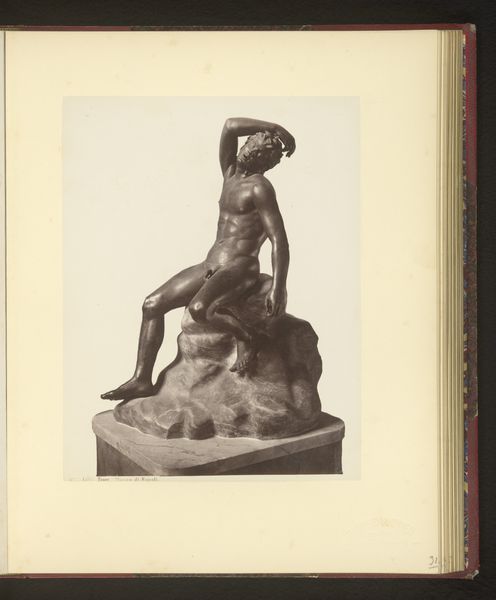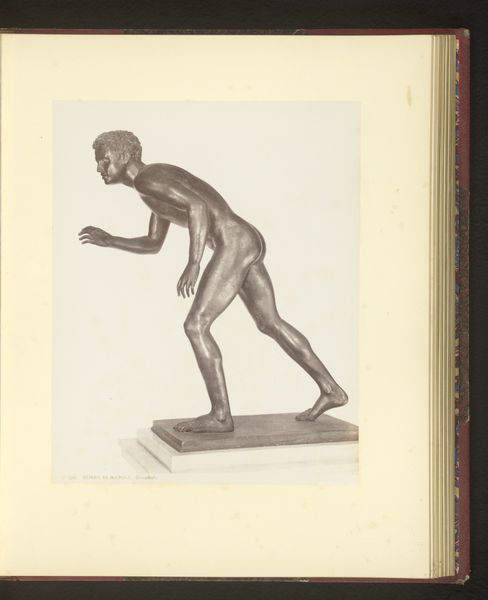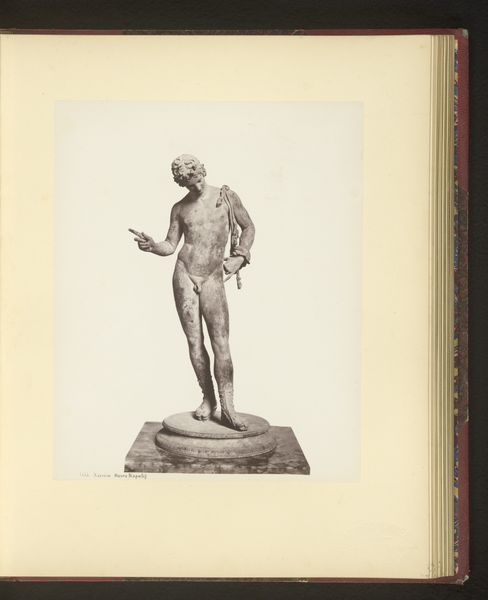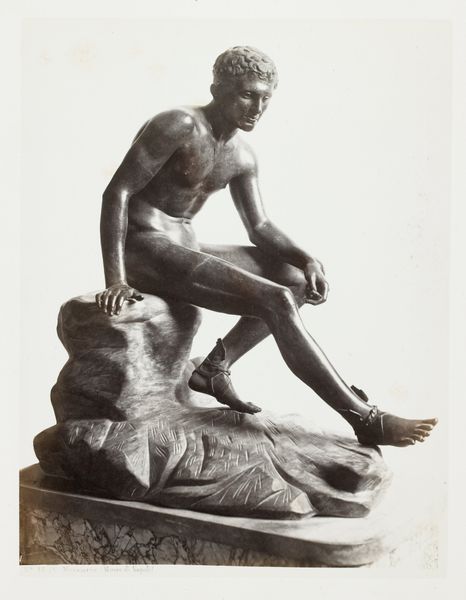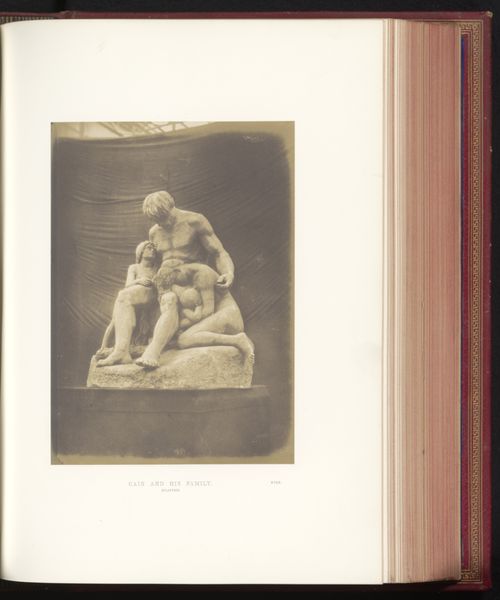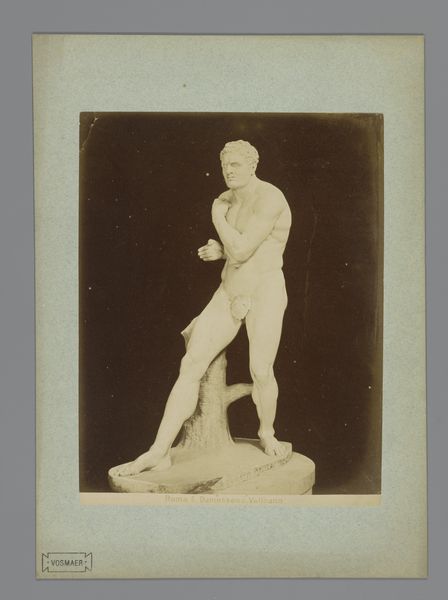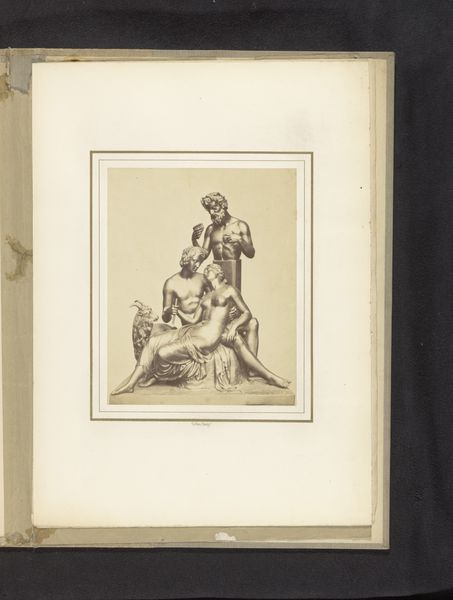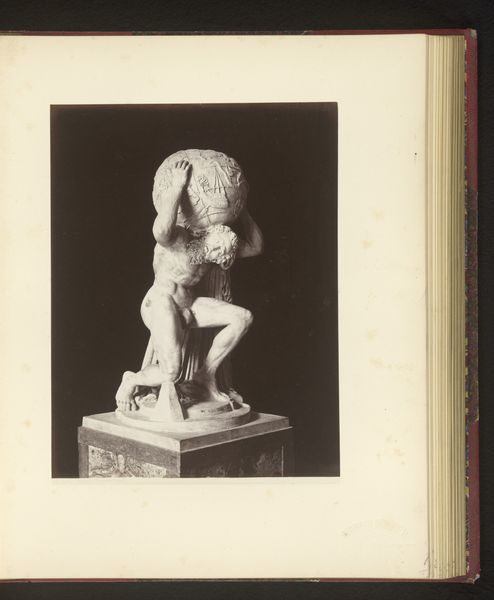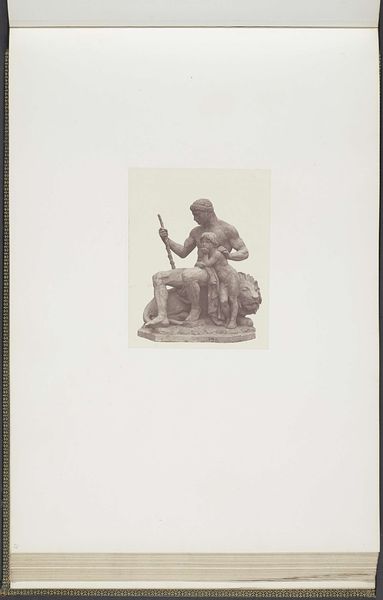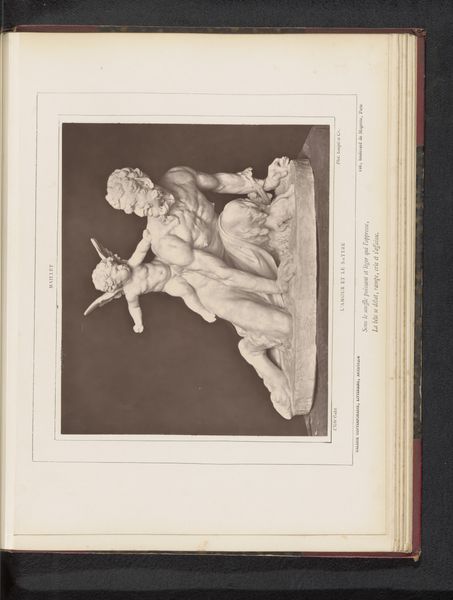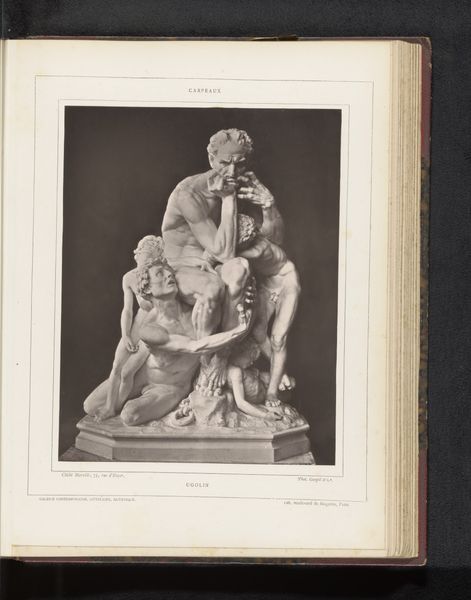
bronze, photography, sculpture
#
portrait
#
bronze
#
figuration
#
photography
#
ancient-mediterranean
#
sculpture
Dimensions: height 248 mm, width 186 mm
Copyright: Rijks Museum: Open Domain
Editor: This photograph from before 1879, by Giorgio Sommer, captures a bronze sculpture of Mercury held at the Rijksmuseum. The statue shows him resting, and he looks surprisingly contemplative, not at all how I imagined him. What's your interpretation of this bronze? Curator: The formal composition is immediately striking. Note the contrasting textures: the smoothness of Mercury’s skin versus the rough-hewn texture of the rock he sits upon. And consider the spiral dynamic of the figure itself. The turn of the head and the gesture of the arm direct our eyes downwards. How do you perceive the function of that contrast and dynamic? Editor: I suppose that draws our eye and maybe forces us to really study the different textures in the work. I am struck by how the sculpture uses bronze to achieve realism and motion. Is the artist perhaps showing that even speed has a quiet moment? Curator: An interesting point. I would note, too, the surface treatment. The patination is artfully deployed, highlighting contours and creating shadow. That enhances our reading of depth. Note also the line created by the sandals and the placement of Mercury on the rock; they produce a vertical lift against Mercury’s introspective position. Editor: I had not noticed that verticality, I see now it almost seems like the figure is caught between actions. It makes the artwork a little unsettling. Curator: Precisely, it creates tension. In isolating line and texture, form reveals content and emotion. This work encourages a sustained contemplation of form to understand subject. Editor: I never thought I could find this much intensity by considering only shapes and textures! Thank you! Curator: You're very welcome. It is by understanding how the image communicates formally that we discover its emotional and symbolic depth.
Comments
No comments
Be the first to comment and join the conversation on the ultimate creative platform.
